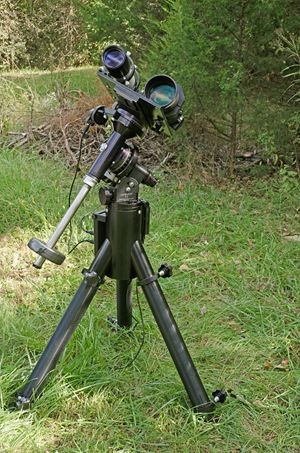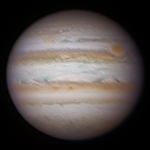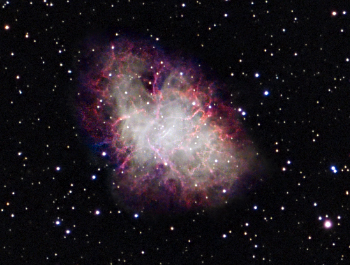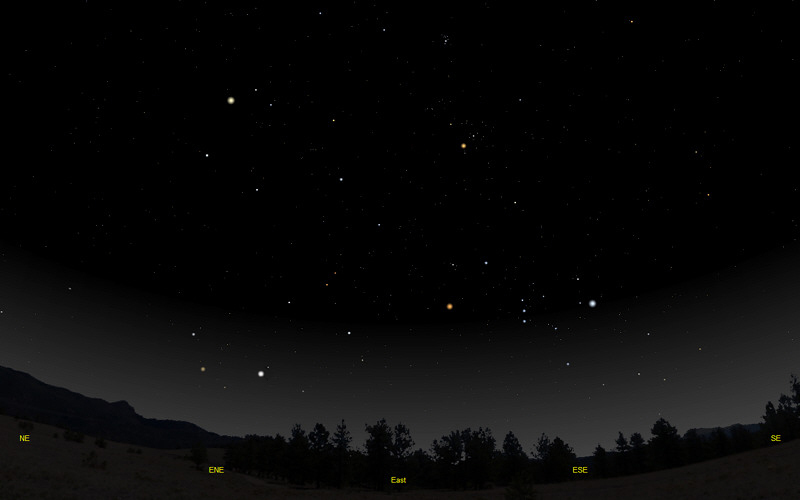The purpose of this feature is to give scout leaders, educators and naturalists an idea of some of the natural events coming up each month. We will try to cover a variety of natural events ranging from sky events to calling periods of amphibians, bird and mammal watching tips, prominent wildflowers and anything else that comes to mind. We will also note prominent constellations appearing over the eastern horizon at mid-evening each month for our area for those who would like to learn the constellations. If you have suggestions for other types of natural information you would like to see added to this calendar, let us know! Note: You can click on the hyperlinks to learn more about some of the featured items. To return to the Calendar, hit the "back" button on your browser, NOT the "back" button on the web page. All charts are available in a "printer friendly" mode, with black stars on a white background. Left clicking on each chart will take you to a printable black and white image. Please note that images on these pages are meant to be displayed at 100%. If your browser zooms into a higher magnification than that, the images may lose quality. Though we link book references to nationwide sources, we encourage you to support your local book store whenever possible. Notes and Images From October 2013
Recently we've been working on a portable arrangement for our telescope mount that will allow us to take the mount to darker skies when we like. A chilly night on October 25th brought a chance to try out the mount with a small equipment platform I built mainly for imaging comets. The imaging platform uses my old Televue Pronto refractor with an autoguider attached to accurately track the stars. On the other side of the platform I can mount a variety of telescopes, lenses and cameras. My target was Messier 31, the Great Andromeda Galaxy. About 2.5 million light-years distant, it has been known since antiquity. The Andromeda Galaxy was first recorded in 964AD by the Persian astronomer, al Sufi, and was referred to as the "Little Cloud." This is exactly how it looks to the naked eye. My favorite description of its appearance in a small scope or binoculars comes from the 17th century astronomer Simon Marius. In 1610, he compared its soft glow to "the light of a candle shining through horn". It is the closest major spiral galaxy to our own galaxy, and the two galaxies will eventually merge. I think of the Andromeda Galaxy like an old friend. It was the first galaxy I spotted when I caught the amateur astronomy bug in high school. For me its appearance high in the eastern sky means crisp and cool nights, the smell of fallen leaves and the slow trills of tree crickets.
Sky Events for November 2013: Comet Ison continues to brighten in the predawn sky in November as it approaches the Sun. It will swing by the Sun on November 28th. It will pass by the bright star Spica on November 17th and 18th. Best views may be in early December in the dawn sky, but comets are pretty hard to predict. Update 11/08/2013 - We now have a total of four comets in the morning sky that can be seen with binoculars or a small telescope. Two are relatively faint, and you'll probably need a small telescope to see them. Comet Ison was barely visible to me on the morning of the 8th with 10x50 binoculars. Much easier is Comet Lovejoy, which is easy to see in binoculars and may become a naked eye object. Right now it is near the "beehive" open star cluster in Cancer. You will probably need an app like Sky Safari (see below) to help locate them. The cheapest version of Sky Safari is only about $3.00, and it will do fine for locating comets and is available for both i-phone and android operating systems. For more on the newcomers, click here. The Leonid Meteor Shower peaks in the morning hours of November 17th. Unfortunately, that's also the date of the November full Moon, and the bright sky will tend to wash out fainter meteors. Evening Sky: Venus reaches its greatest elongation from the Sun this month, and is easy to see in the western sky at dusk. Look for it about 30 minutes after sunset.
Jupiter rises about 10:18pm CDT at the beginning of the month near Castor and Pollux in Gemini. Wait till it is high in the sky to get the best telescopic views. Morning Sky: Mars rises around 2:20am CDT at the beginning of the month in Leo. Too far away to show much detail through a telescope, it is only about 5 seconds of an arc in apparent diameter. Saturn is in conjunction with the Sun during the first week in November and does not emerge into the dawn sky until the last week of the month. Mercury passes through inferior conjunction with the Sun on November 1st. It begins to be visible to the naked eye in the dawn sky around November 9th. Mercury and Saturn appear to pass each other on November 25th and 26th. A good time to look for them is about 30 minutes before sunrise. Comet Ison will be below the pair on the 25th. Binoculars should give the best views.
Constellations: The views below show the sky looking east at 9:30pm CST on November 15th. The first view shows the sky with the constellations outlined and names depicted. Star and planet names are in green. Constellation names are in blue. The second view shows the same scene without labels. The Crab Nebula, a supernova remnant, is near the tip of Taurus the Bull's lower horn. Click the image at right for a binocular and telescope finder chart and more about the nebula. The Pleiades, a beautiful open star cluster, is now well up in the sky, above Aldebaran in Taurus. The entire cluster is wreathed in faint nebulosity. The nebulosity surrounding the bright stars of the Pleiades shines by reflected light. Auriga, the Charioteer, with its bright star Capella is prominent in the northeast. Look for the bright stars Castor and Pollux as the constellation Gemini, The Twins, clears the horizon. Jupiter will be nearby. In the southeast, mighty Orion clears the horizon with its bright stars Betelgeuse and Rigel. Note the difference in color between the two stars. Betelgeuse is a red giant and looks orange. Rigel is very hot supergiant and looks bluish. Looking at the center of the three "sword" stars with binoculars, you can see M42, the Orion Nebula. Just poking its head above the horizon is Lepus, The Hare.
On Learning the Constellations: We advise learning a few constellations each month, and then following them through the seasons. Once you associate a particular constellation coming over the eastern horizon at a certain time of year, you may start thinking about it like an old friend, looking forward to its arrival each season. The stars in the evening scene above, for instance, will always be in the same place relative to the horizon at the same time and date each November. Of course, the planets do move slowly through the constellations, but with practice you will learn to identify them from their appearance. In particular, learn the brightest stars for they will guide you to the fainter stars. Once you can locate the more prominent constellations, you can "branch out" to other constellations around them. It may take you a little while to get a sense of scale, to translate what you see on the computer screen or what you see on the page of a book to what you see in the sky. Look for patterns, like the stars that make up Orion.
The earth's rotation causes the constellations to
appear to move across the sky just as the Sun and the Moon appear to do.
If you go outside earlier than the time shown on the charts, the constellations
will be closer to the eastern horizon. If you observe later, they will
have climbed higher. As each season progresses, the earth's motion around the Sun causes the constellations to appear a little farther towards the west each night for any given time of night. If you want to see where the constellations in the above figures will be on December 15th at 9:30pm CST, you can stay up till 11:30pm CST on November 15th and get a preview. The westward motion of the constellations is equivalent to two hours per month. Recommended: Sky & Telescope's Pocket Star Atlas is beautiful, compact star atlas. A good book to learn the constellations is Patterns in the Sky, by Hewitt-White. You may also want to check out at H. A. Rey's classic, The Stars, A New Way to See Them. For skywatching tips, an inexpensive good guide is Secrets of Stargazing, by Becky Ramotowski. A good general reference book on astronomy is the Peterson
Field Guide,
A Field Guide to the Stars and Planets, by Pasachoff. The book retails for around $14.00. Starry Night has several software programs for learning the night sky. Visit the Starry Night web site at www.starrynight.com for details. The Virtual Moon Atlas is a terrific way to learn the surface features of the Moon. And it's free software. You can download the Virtual Moon Atlas here. Cartes du Ciel is a great program for finding your way around the sky. It is also free, and can be downloaded here. Apps: We really love the Sky Safari 3 Pro application described here. For upcoming events, the Sky Week application is quite nice. Both apps are available for both I-phone and Android operating systems.
Amphibians:
We think of November as the quietest time of year for Tennessee frogs and toads. However, some song can still occasionally be heard. Listen for Spring Peepers, Upland Chorus Frogs and Southern Leopard Frogs. Checking around ponds at night with a flashlight held next to your temple will often show the eye shine of Southern Leopard Frogs, Green Frogs and Bullfrogs. As in October, you can locate many of the frogs and toads that have been calling more frequently earlier in the year by driving the back roads slowly on rainy nights. This is a two person job. One person watches the road for amphibians and one person looks out for other vehicles. Recommended: The Frogs and Toads of North America, Lang Elliott, Houghton Mifflin Co. Archives (Remember to use the back button on your browser, NOT the back button on the web page!) Natural Calendar September 2013 Natural Calendar February 2013 Natural Calendar December 2012 Natural Calendar November 2012 Natural Calendar September 2012 Natural Calendar February 2012 Natural Calendar December 2011 Natural Calendar November 2011 Natural Calendar September 2011 Natural Calendar February 2011 Natural Calendar December 2010 Natural Calendar November 2010 Natural Calendar September 2010 Natural Calendar February 2010 Natural Calendar December 2009 Natural Calendar November 2009 Natural Calendar September 2009 Natural Calendar February 2009 Natural Calendar December 2008 Natural Calendar November 2008 Natural Calendar September 2008 Natural Calendar February 2008 Natural Calendar December 2007 Natural Calendar November 2007 Natural Calendar September 2007 Natural Calendar February 2007 Natural Calendar December 2006 Natural Calendar November 2006 Natural Calendar September 2006 Natural Calendar February 2006
Natural Calendar December 2005
Natural Calendar November 2005
Natural Calendar September 2005
Natural Calendar February 2005
Natural Calendar December 2004
Natural Calendar November 2004
Natural Calendar September 2004
Natural Calendar February 2004
Natural Calendar December 2003
Natural Calendar November 2003
Natural Calendar September 2003 Natural Calendar February 2003 Natural Calendar December 2002 Natural Calendar November 2002 Nature Notes Archives: Nature Notes was a page we published in 2001 and 2002 containing our observations about everything from the northern lights display of November 2001 to frog and salamander egg masses. Night scenes prepared with The Sky Professional from Software Bisque All images and recordings © 2013 Leaps |
|||||||||






